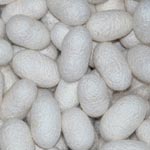|
Spin Out Companies The original spin-out from the Oxford Silk Group was Spinox Ltd in 2001, which in 2004 morphed into Oxford Biomaterials Ltd. Oxford Biomaterials is dedicated to R&D of silk-based materials and presently focuses on regenerating silk fibroins for reprocessing, and on their applications in regenerative medicine. In 2008 OBM spun out Orthox, a UK leader in the development of silk-based medical devices designed to repair and regenerate damaged cartilage. In 2019 OBM spins out out Newrotex Ltd a UK leader in the development of silk bridges devices designed to repair and regenerate damaged nerves. Spintex, the newest (2019) spinout from the University of Oxford and Oxford Silk Group, artificially spins the highest performance silk fibres available, through a spider inspired process. 1000x more energy efficient than synthetic plastic fibres, they do not use hazardous chemicals and the only by-product is water. Initially, Spintex's fibres are finding use in sustainable fashion textiles, but developments in strength and toughness will reach new markets in advanced technical textiles, including lightweight composites for aerospace and automotive industries, and biocompatible medical textiles for a multitude of healthcare problems. Additionally, the Oxford Silk Group has co-founded the Oxford Bionics Initiative, a programme designed to spearhead research at Oxford University into Nature's relationship with, and exploitation of, her physical environment.
|
|
